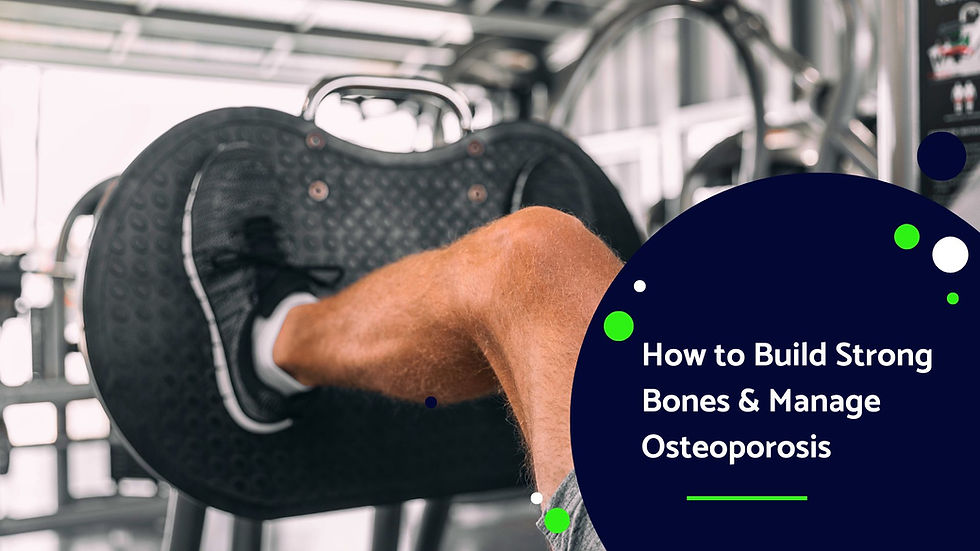How to Build Strong Bones & Manage Osteoporosis
- Fiachra Ward

- Jun 14, 2024
- 2 min read

What is Osteoporosis?
Osteoporosis is characterised by decreased bone mineral density. It affects both men and women as we age but tends to accelerate more rapidly post-menopause in women. It leaves the body more susceptible to fractures from minor falls and can lead to slower recovery times afterwards. DEXA scans are routinely carried out for those aged 60+ as a test for bone health.
How Do I Manage Osteoporosis?
Management of osteopenia and osteoporosis generally involves dietary supplements of calcium and vitamin D and encourages a diet rich in protein to support bone and muscle turnover. However, a crucial component that is sometimes neglected is the role of exercise - progressive resistance strength training and impact weight-bearing exercise.
Exercises for Managing Osteoporosis
When it comes to physiotherapy and exercise for osteoporosis, we prioritise based on three areas:
Steady Osteoporosis is something which typically affects you most only if you fall. Simple falls and impacts can lead to a fracture more readily in those with osteoporosis. A key part of management is to improve balance and reduce the risk of these falls. If someone is unsteady on their feet this would take priority.
Straight As bone density and strength reduces, you may lose some height through your spine and become more hunched and stooped. If someone is struggling with back pain or has suffered with previous vertebral fractures, we would prioritise this. By working on exercises to strengthen the extensor muscles of your back, we can help maintain a good upright posture and reduce the likelihood of you developing back pain.
Strong With other issues addressed, the priority moves to general strength – both for muscles and bones. Strength work is done using weights and other resistance equipment. For more specific bone adaptations, it is also important to incorporate impact-based exercises.
The impact work is chosen carefully to match each individually level of fitness and ability. It is important to note that simply walking doesn’t constitute sufficient impact to make a meaningful improvement in most individuals. Examples of some low to moderate based impacts could be stamping on the spot, landing from jumps, skipping, hopping or jogging.
There have been many promising studies carried out which show that declines in bone density can be delayed and even reversed by taking a proactive approach, some of which is readily available at the Royal Osteoporosis Society. They also have more specific information regarding exercise for managing osteoporosis here.
At The Physio Ward, we can work with you one-to-one and show you ‘how to’ instead of saying ‘don’t do’, giving you the confidence to stay active and continue to do what you enjoy in later life. Consider visiting us if you'd like to take more control of your osteoporosis, you can book an appointment here, or call us at 01-6870302.



Comments